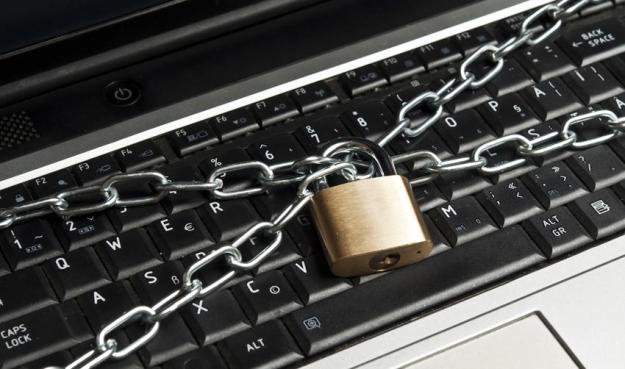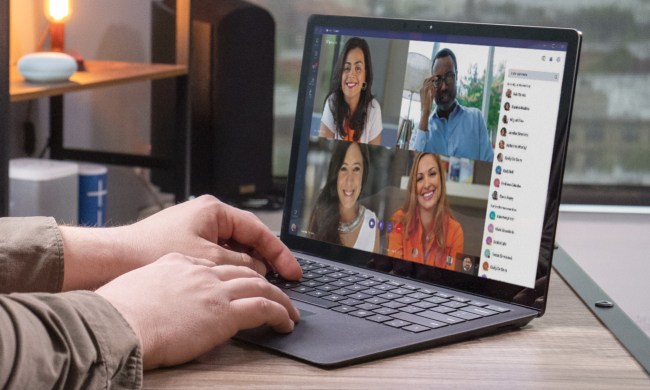
Starting July 1, the nation’s largest Internet service providers (ISPs) have agreed to adopt a “Graduated Response” program intended to cut down on illegal file sharing. The program, colloquially known as the “six-strikes” system, is the brainchild of the Recording Industry Association of America (RIAA) and the Motion Picture Association of America (MPAA) — the same industry groups that conjured up SOPA and PIPA. The system will affect millions of Internet users across the country. Whether you download your music and movies from the Internet or not, it is important for everyone to understand what the plan is, and how it could affect your life. Here is everything you need to know about “six-strikes.”
How does it work, in a nutshell?
Anytime copyright holders find that their content is being illegally downloaded, they will contact the participating ISPs. The ISPs will then send out an initial “copyright alert” to accounts linked to the alleged infringement. If a subscriber’s account continues to be linked to infringement, his or her ISP will send out up to four written notices, the natures of which are sometimes vague and varying. If the alleged infringement continues still, the ISP will then take “mitigation measures,” which include bandwidth throttling (i.e. slowing down the accused subscriber’s connection), or even temporarily cutting off full Web browsing abilities. In cases where alleged infringement persists after the initial mitigation measure, the subscriber may face lawsuits from the copyright holder, and/or have their Internet access cut entirely, in accordance with section 512 of the Digital Millennium Copyright Act (DCMA).
Who is in charge of this system?
Administering “six strikes” is a new entity called the Center for Copyright Information (CCI), which was established by the entertainment industry and the ISP industry. (Internet users were not part of the negotiations.) The CCI will be governed by a six-person executive committee, made up of three representatives of the copyright industry, and three representatives of participating Internet service providers. There will also be a three-person advisory board, made up of people “from relevant subject matter and consumer interest communities,” who represent us, the Internet users, in all this. Though, from the looks of it, the advisory committee appears to be mostly ornamental.
The CCI develops the “educational material” part of the alerts, and develops a set of “best practices” for the copyright alerts system to abide by. According to the CCI’s FAQs, the CCI will also “benefit from guidance by consumer advocates and technical experts serving on its advisory committee or providing other expert services,” whatever that means.
Which ISPs are part of this plan?
The big ones. Those currently on board include AT&T, Cablevison, Comcast, Time Warner Cable, and Verizon. Smaller, local ISPs are not yet included in the plan. But more may climb aboard by the time the plan sets sail this summer.
What are these alerts?
Officially, the plan contains six levels of “copyright alerts,” and the consequences at each depth intensify. They are as follows:
- First alert: An ISP will send a written alert (probably via email), which informs the subscriber that his/her account has been linked to infringing activities. This alert will also direct the subscriber to “educational resources” which will “(i) help him/her to check the security of his/her computer and any Wifi network, (ii) provide explanatory steps which will help to avoid content theft in the future and (iii) provide information about the abundant sources of lawful music, film and TV content,” according to the CCI. Of course, all of these “educational resources” are provided by the entertainment industry and their ISP cohorts, so you can guess what kind of advice these one-sided resources provide.
- Second alert: This alert nearly mimics the first, but will “underscore the educational messages.” Also, ISPs may choose to simply skip this alert, and jump to option number three.
- Third alert: At this level, things get creepy. Once an account is linked to infringing behavior a third time, the ISP will issue the alert through a “conspicuous mechanism,” like a pop-up window or landing screen, when the user goes online. The user must then explicitly acknowledge that he/she has seen the alert, which reminds that “content theft” is taking place through his/her account, and re-informs him/her the consequences of illegally downloading copyrighted content.
- Fourth alert: The fourth alert is essentially identical to the third alert.
- Fifth alert: Now the “mitigation measures” begin. In addition to sending an alert (probably the same alert as the third and fourth alerts), the ISP can choose to a) reduce Internet connection speeds (i.e. throttling); b) impose a landing page, which the accused subscriber cannot bypass until he/she contacts the ISP “to discuss the matter” — or reviews and responds to more of that enlightening “educational material.” According to the agreement, the ISPs have some freedom to choose which mitigation measures to take at this point in the alert process. And these measures may include some that are not listed here.
- Sixth alert: At this point, the ISP may issue another mitigation measure. But the company could, legally, suspend the customer’s account altogether — though that is not an official part of the plan. Also, the subscriber could be sued by the copyright holders under DCMA. That said, the specific consequences at this stage remain dangerously unclear. (We’re putting our money on lawsuits.) The CCI does not expect many subscribers to reach this level of alert.
Is this the same as the “three strikes” laws overseas?
No. First, this plan is not a law at all. It is a voluntary agreement between copyright holders and ISPs. Second, this plan does not mandate that ISPs completely cut subscribers’ Internet access, as is the case with so-called “three strikes” laws. Moreover, the plan does not even include a temporary suspension of Internet access — unless, of course, you consider an impassable landing page a suspension of Internet access.
Who decides to send out these alerts?
The ISPs are in charge of sending out the alerts, as they are the only ones who can link the allegedly infringing activity to specific subscriber accounts. However, the ISPs take this action based entirely on the allegations of the copyright holders. In other words, Internet users can be punished because of accusations by the copyright industry, but no one is necessarily verifying the claims.
What do copyright holders hope to achieve with these alerts?
Studies show that many people do not know that unauthorized downloading of copyright-protected content from torrent sites, or other websites is illegal. Even if they do, many fail to realize the potentially severity of the consequences. By sending out these alerts, Big Entertainment and the ISPs hope that many will simply stop getting their entertainment illegally, and opt for legal distribution outlets.
What happens if my account is incorrectly linked to copyright infringement?
This is perhaps the most problematic part of this plan, as it puts the burden of proof on the Internet subscriber, who must prove that he did not illegally download copyrighted content. As it stands, all a copyright holder has to do is say — but not prove — that infringing activities are taking place in order for an ISP to alert or punish a subscriber with throttling or access disruption. In other words: Users are considered guilty unless they can prove themselves innocent. As the Electronic Frontier Foundation, a public rights advocacy group, notes, “This burden-shift violates our traditional procedural due process norms and is based on the presumed reliability of infringement-detection systems that subscribers haven’t vetted and to which they cannot object.”
If you do find that your account has been incorrectly targeted — or that your Wi-Fi was used by someone else to illegally download copyrighted works — you have only 10 days to challenge the accusation. As Ars Technica reports, there are six “pre-approved” methods for challenging these accusations. (Any method that strays from these six options is not acceptable.) Also, doing so will cost you a $35 “filing fee,” paid to the CCI, which will be refunded if you are found to be in the right. It is currently not clear which lawyers decide who is right and who is wrong in these cases. And it is entirely possible that they will have ties to the copyright industry.
Are there any consequences for copyright holders who wrongly accuse subscribers of infringement?
No.
So, is this plan good or bad for Internet users?
It is good in that receiving an alert is better than getting hit with a lawsuit out of the blue. Also, by sending out multiple notices before a subscriber faces any punishments, the system gives people a chance to stop downloading copyrighted content illegally before facing any type of legal action.
However, it is bad because the entire system was constructed without any input from Internet users. It was also created entirely by big entertainment lobbyists (i.e. the MPAA and RIAA), and is constructed to serve their needs, regardless of whether those needs are at odds with individual users’ needs. Furthermore, all of the “educational material” passed out comes from the copyright industry, which is known to use false information and scare-mongering to describe the effects of unregulated intellectual property.
In short, the system is rigged in favor of the copyright industry.
Is there any way I can fight back against this plan?
The plan has not yet gone into effect, so time remains for things to change. That said, individuals can do very little. One option: tell your ISP that you plan to cancel your service if they move forward with this system. Another is to express your concern about the plan to your senators and representatives in Congress. Unfortunately, neither of these options stand much chance of working — unless the Internet community at large pushes back in concert.
Image courtesy of FuzzBones/Shutterstock


